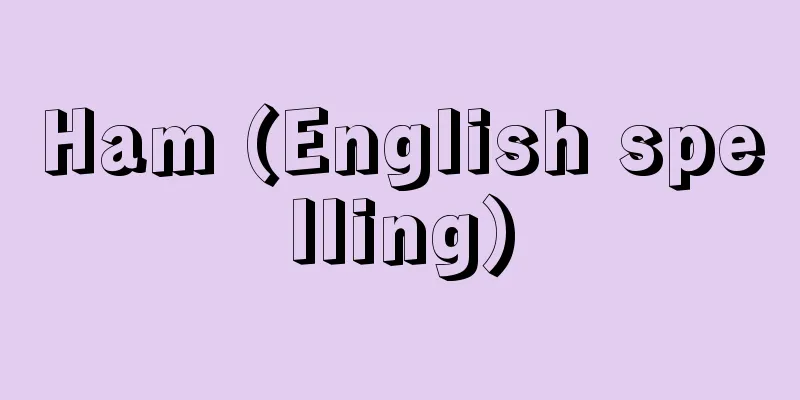Blowgun - Fukiya

|
It is a tool consisting of a blowpipe and an arrow, in which an arrow is inserted and then blown away by the blow of air. The tube is made of bamboo with the nodes removed, reed stalks, or hollowed-out wood, sometimes joined in two or three sections, and is 2 to 4 centimeters in diameter and 1.5 to 3.6 meters in length. The arrows are made of bamboo or palm leaf ribs that have been thinly shaved to a sharp tip, with cotton or cork-like pith attached to the base to catch the breath, and are about 15 to 30 centimeters long. The maximum range is less than 100 meters, but with skill, it is possible to hit the target with great accuracy up to around 50 meters away. The arrows themselves are light and the impact is small, but the effect is greatly increased by using arrow poison. Well-known arrow poisons include ipoh, extracted from the bark of the mulberry family in Southeast Asia, and curare, extracted from plants of the Menispermaceae and Buddlejaceae families in South America. Arrows are difficult to retrieve once used, and carrying poisoned arrows as they are can be dangerous, so they are often carried in a case of a dozen or even several dozen. Blowguns are important hunting tools in the tropical and subtropical forest regions of Southeast Asia and South America, particularly in dense forests where visibility is poor and it is difficult to approach the target, and are useful for hunting arboreal birds and animals. They are also often used for fishing and combat. In other regions, such as Japan, the central and northern parts of the United States, Micronesia, and Melanesia, blowguns are used more as a recreational tool, except for limited purposes such as hunting small birds. [Katsuhiko Kano] Source: Shogakukan Encyclopedia Nipponica About Encyclopedia Nipponica Information | Legend |
|
吹筒と矢からなり、筒に矢を入れて息で矢を吹き飛ばす道具。筒は節を抜いた竹、アシの茎、くりぬいて中穴にした木などで、ときに2~3段に継ぎ、直径2~4センチメートル、全長は1.5~3.6メートルに及ぶ。矢は竹やヤシの葉肋(ようろく)などを細く削って先端をとがらせ、元には息を受けるための綿、コルク質の木の髄などを取り付けたもので、長さは15~30センチメートル程度である。射程は最大100メートル足らずで、熟達すれば、50メートル前後まではかなり正確に的中させうる。 矢自体は軽く、打撃も小さいが、矢毒を用いることによって効果は著しく増大する。矢毒としては、東南アジアではクワ科の樹皮からとるイポー、南アメリカではツヅラフジ科、フジウツギ科の植物から抽出するクラーレが著名である。矢は使用すると回収が困難で、かつ毒矢の場合、そのまま携行するのは危険を伴うため、十数本から数十本をまとめてケースに入れ、持ち運ぶことが多い。 吹矢は東南アジア、南アメリカの熱帯、亜熱帯森林地域では、狩猟用具として重要で、とくに見通しが悪く、対象への接近が困難な密林で、樹上性の鳥や獣などの狩猟に有効である。また、漁労や戦闘用にもしばしば用いられる。その他の地域、たとえば日本やアメリカの中部以北、ミクロネシア、メラネシアなどでは、吹矢は小鳥の狩猟など限られた目的を除き、むしろ遊びの道具としての性格が強い。 [鹿野勝彦] 出典 小学館 日本大百科全書(ニッポニカ)日本大百科全書(ニッポニカ)について 情報 | 凡例 |
>>: Grasshopper - Splish-splash
Recommend
New Tsukuba Collection - New Tsukuba Collection
A collection of linked verse from the late Muroma...
Benzer, S.
... However, when bacteria and viruses appeared a...
Anori Cape - Anori Misaki
…It is located at the northeastern tip of Ago Tow...
ESCA (Esca)
...The one that uses X-rays is called X-ray photo...
Road Traffic Law - Douro Kotsuuho
This law stipulates the rules that drivers and pe...
Khiba Khan
An Uzbek state with its capital in Khiva (original...
Eurypterus - Eurypterus
...Some are small, but some are larger, exceeding...
River port - Kasenko
… [Reclaimed and excavated ports] The creation of...
Negligence handcuffs - kataitejo
〘Noun〙 One of the punishments in the Edo period. W...
Sino-Japanese War
A war between Japan and the Qing Dynasty (China) ...
Samurai-dokoro
It is also called "saburaidokoro." In t...
Coastal defense - Coastal defense
…Formally called Coast Defense Officer, this was ...
Murayama Kaita
Western-style painter and poet. Born in Yokohama ...
Xu Hun (English spelling)
[Birth] Teigen 7 (791) [Death] Daichu 8 (854)? A C...
Murray Gell-Mann
1929‐ American theoretical physicist. After gradua...









